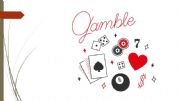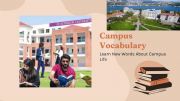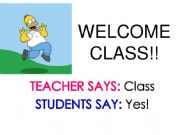
Make or do?
Make or do???? Who doesn�t get mixed up???
Enjoy!
Level: intermediate
Age: 10-17
Type: grammar-guide

SOME-, ANY-, NO-, EVERY- COMPOUNDS
Basic grammar points on some-, any-, no-, every- compounds. 25 sentences to practice the use of them. Key included. Thanks in advance. Have a nice day!
Level: intermediate
Age: 12-14
Type: worksheet

4 non blondes - what�s up lyrics worksheet
4 non blondes - what�s up lyrics worksheet
Level: intermediate
Age: 12-100
Type:

Food and shopping - a boardgame or pairwork (34 questions for discussion)
This boardgame deals with advanced vocabulary connected with food and shopping. I have also prepared a pairwork activity consisting of questions used in the boardgame. (editable)
Level: advanced
Age: 14-17
Type: worksheet

be or have?
Second worksheet of my series on "be or have?". 1st ex. students choose between a form of "be" or "have" 2nd ex. students match pictures to sentences and fill in with a verb. 3rd ex. students fill in a text and answer some questions.
Level: elementary
Age: 10-14
Type: worksheet

WHO? OR WHOSE?
COMPLETE THE QUESTIONS WITH WHO OR WHOSE
Level: elementary
Age: 8-17
Type: worksheet

Infinitive or gerund
A brief explanation and 3 types of exercises for your students to practice. Hope it�s useful :) Thanks for your feedback!
Level: intermediate
Age: 12-100
Type: worksheet

Adjective or Adverb?
Brief review and tasks to practise adjectives and adverbs: make the adverb, complete with the adjective or adverb, complete without options, etc.
Level: intermediate
Age: 9-14
Type: worksheet

Function or Purpose?
A worksheet for intermediate students to explain the difference between stating purpose with for + ing and stating purpose using to + infinitive. It is based on the content in Interchange 2 Unit 7. The font used for title is Aka dylan open
Level: intermediate
Age: 14-17
Type: worksheet

Adjectives: Comparative OR Superlative?
Review of comparative and superlative degrees.
Level: elementary
Age: 9-15
Type: worksheet

Big or large? (Collocations )
This worksheet will teach students which collocations go with the word "big" and which go with the word "large". Answers and teaching suggestions included. Fully editable. All feedback welcome!
It�s pretty funny (I think), so have fun!
*****PLEASE NOTE***** The picture preview on this website does not display the text in it�s correct alignme...
Level: intermediate
Age: 8-17
Type: worksheet

Let�s talk about literature
This worksheet deals with literature. There is a matching exercise related to book covers and their corresponding genres. A set of 18 cards which can be cut out enables the students to discuss about the topic of literature. Enjoy!
Level: intermediate
Age: 13-17
Type: worksheet

-ed or -ing form ?
A simple worksheet that consolidates the ed versus ing forms.I hope it�s useful!
Level: intermediate
Age: 14-17
Type: worksheet

Read - Look - Answer (6) - Photos
Picture-based reading comprehension test for elementary learners. Can be used with young learners as well as teens or adults. Students look at 5 photos and answer 25 questions. Useful for checking basic understanding and reading skills.
Level: elementary
Age: 7-17
Type: worksheet

Comparative or superlative that is the question! 1
the first of two worksheets about comparatives and superlatives.(upper elementary students) Students put the adjectives in brackets in the comparative or superlative form.
Level: elementary
Age: 10-17
Type: worksheet
|

Gamble game: right or wrong?
Level: intermediate
Age: 12-100
Format: PowerPoint

MODALS OR AUXILIARY VERBS
iN THIS POWERPOINT YOU WILL LEARN THE FORM AND USES OF MODALS
Level: elementary
Age: 12-17
Format: PowerPoint

University
A power point that shows the words related to university and campus
Level: intermediate
Age: 12-16
Format: PowerPoint

conjunctions (and, but, or)
conjunctions (and, or but) with cool animations....
Level: intermediate
Age: 8-17
Format: PowerPoint

Indefinite articles + Some + Any
An overview about the differences among a/an, some and any.
Level: elementary
Age: 12-17
Format: PowerPoint

how do you spell that
spelling
Level: elementary
Age: 10-14
Format: PowerPoint

And & But &Or
Linkers such as AND,BUT and OR are introduced.
There�s also a gap-fill activity for some guided practice.
Hope you enjoy it!
Cheers.
Level: elementary
Age: 10-17
Format: PowerPoint

wanted - enchanted or not...
This is a ppt with basic info on some magical creatures, like wanted posters without pics, for sts to guess the creature. It�s designed to start as simple reading in a game, which can then be turned into using the given info for writing short essays. Again, fairytales go well with Halloween, so it can be used in many occasions. (if you want to prin...
Level: intermediate
Age: 8-17
Format: PowerPoint

verb+Infinitive or verb+ -ing
infinitive or gerund
Level: intermediate
Age: 14-17
Format: PowerPoint

learning a language in a native country
a presentation about learning language in its native country
Level: intermediate
Age: 14-17
Format: PowerPoint

Job Success discuss or write for each slide
Job Success discuss or write for each slide
Level: intermediate
Age: 9-17
Format: PowerPoint

Present Perfect Simple or Present Perfect Continuous
A powerpoint to exemplify the difference between Simple Present Perfect and Present Perfect Continuous. It compares two situations with the help of two images. Then some rules to explain the differences, along with a few examples.
Level: intermediate
Age: 13-17
Format: PowerPoint

Subject Pronouns
Level: elementary
Age: 7-9
Format: PowerPoint

Can / Must
mc questions on must and can
Level: elementary
Age: 4-17
Format: PowerPoint

had better in context
�t �s a good context for teaching had better.
Level: elementary
Age: 12-14
Format: PowerPoint
|
|